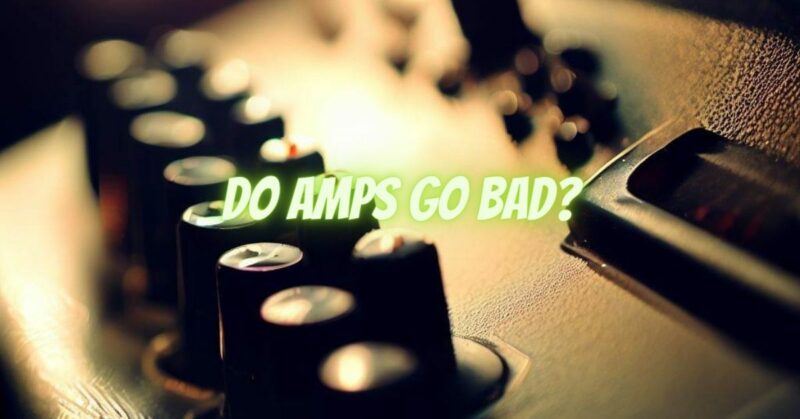Guitar and bass amplifiers are essential components in the world of music, providing the necessary power and tone shaping capabilities for electric instruments. Like any piece of equipment, amps are subject to wear and tear over time. In this article, we will explore the question of whether guitar and bass amps go bad, examining factors that can affect their lifespan and discussing the importance of maintenance.
Understanding Amp Lifespan:
- Components and Electronics: Guitar and bass amps contain various electronic components, such as capacitors, resistors, transformers, and tubes (in tube amps). These components can degrade over time due to usage, temperature fluctuations, and environmental factors. While well-built amps can last for many years, the lifespan of individual components may vary. However, with proper care and maintenance, amps can have a long operational life.
- Tubes: In tube amplifiers, the tubes are critical components that contribute to the overall sound and tone. Tubes have a limited lifespan and will eventually wear out or fail. The longevity of tubes depends on factors such as usage, playing volume, and the quality of the tubes themselves. It is common for tube amps to require periodic tube replacements to maintain optimal performance.
- Speaker Wear: Speakers in guitar and bass amps can also experience wear and tear over time. Prolonged exposure to high volumes, excessive low-frequency content, or physical damage can impact the speaker’s performance. However, quality speakers can withstand significant use, and proper handling and appropriate volume levels can extend their lifespan.
Maintenance and Care:
- Regular Cleaning: Dust and debris can accumulate inside the amp chassis, affecting its performance and potentially causing overheating. Regularly cleaning the amp’s exterior and interior components, including vents and fans, can help maintain proper airflow and prevent buildup that could lead to malfunctions.
- Power and Handling: Proper power management is crucial for the health of your amp. Ensure the amp is connected to a stable power source and avoid subjecting it to power surges or fluctuations. When moving or transporting the amp, handle it with care, avoiding impacts or sudden jolts that could damage internal components.
- Tube Replacement and Servicing: For tube amps, periodically replacing worn-out tubes and having the amp serviced by a qualified technician can help maintain optimal performance and address any potential issues. Timely repairs or component replacements can prevent minor problems from escalating and ensure the amp operates at its best.
- Storage: When the amp is not in use, store it in a cool, dry environment, away from direct sunlight and extreme temperatures. Protect it from moisture or humidity, as these can lead to corrosion or damage to the internal components.
Conclusion:
While guitar and bass amps are not immune to wear and tear, they can provide many years of reliable service with proper care and maintenance. The lifespan of an amp depends on various factors, including the quality of its components, usage, and environmental conditions. Regular cleaning, appropriate handling, and timely maintenance, such as tube replacement and servicing, can help extend the lifespan of your amp and ensure it continues to deliver the desired tone and performance. By treating your amp with care and attention, you can enjoy its capabilities for years to come.


